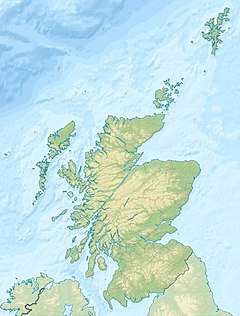Edinburgh Old Town

The Old Town seen from Princes Street
|
|
| UNESCO World Heritage Site | |
|---|---|
| Location |
Scotland, Scotland |
| Coordinates | 55°56′51″N 3°11′30″W / 55.947572°N 3.191631°W |
| Criteria | ii, iv |
| Reference | 728 |
| Inscription | 1995 (19th Session) |
|
[]
|
|
The Old Town (Scots: Auld Toun) is the name popularly given to the oldest part of Scotland's capital city of Edinburgh. The area has preserved much of its medieval street plan and many Reformation-era buildings. Together with the 18th-century New Town, it forms part of a protected UNESCO World Heritage Site.
The "Royal Mile" is a name coined in the early 20th century for the main artery of the Old Town which runs on a downwards slope from Edinburgh Castle to both Holyrood Palace and the ruined Holyrood Abbey. Narrow closes (alleyways), often no more than a few feet wide, lead steeply downhill to both north and south of the main spine which runs west to east.
Notable buildings in the Old Town include St. Giles' Cathedral, the General Assembly Hall of the Church of Scotland, the National Museum of Scotland, the Old College of the University of Edinburgh and the Scottish Parliament Building. The area has a number of underground vaults and hidden passages that are relics of previous phases of construction.
No part of the street is officially called The Royal Mile in terms of legal addresses. The actual street names (running west to east) are Castlehill, Lawnmarket, High Street, Canongate and Abbey Strand.
The street layout, typical of the old quarters of many northern European cities, is made especially picturesque in Edinburgh, where the castle perches on top of a rocky crag, the remnants of an extinct volcano, and the main street runs down the crest of a ridge from it. This "crag and tail" landform was created during the last ice age when receding glaciers scoured across the land pushing soft soil aside but being split by harder crags of volcanic rock. The hilltop crag was the earliest part of the city to develop, becoming fortified and eventually developing into the current Edinburgh Castle. The rest of the city grew slowly down the tail of land from the Castle Rock. This was an easily defended spot with marshland on the south and a man-made loch, the Nor Loch, on the north. Access up the main road to the settlement was therefore restricted by means of various gates and the city walls, of which only fragmentary sections remain.
...
Wikipedia

